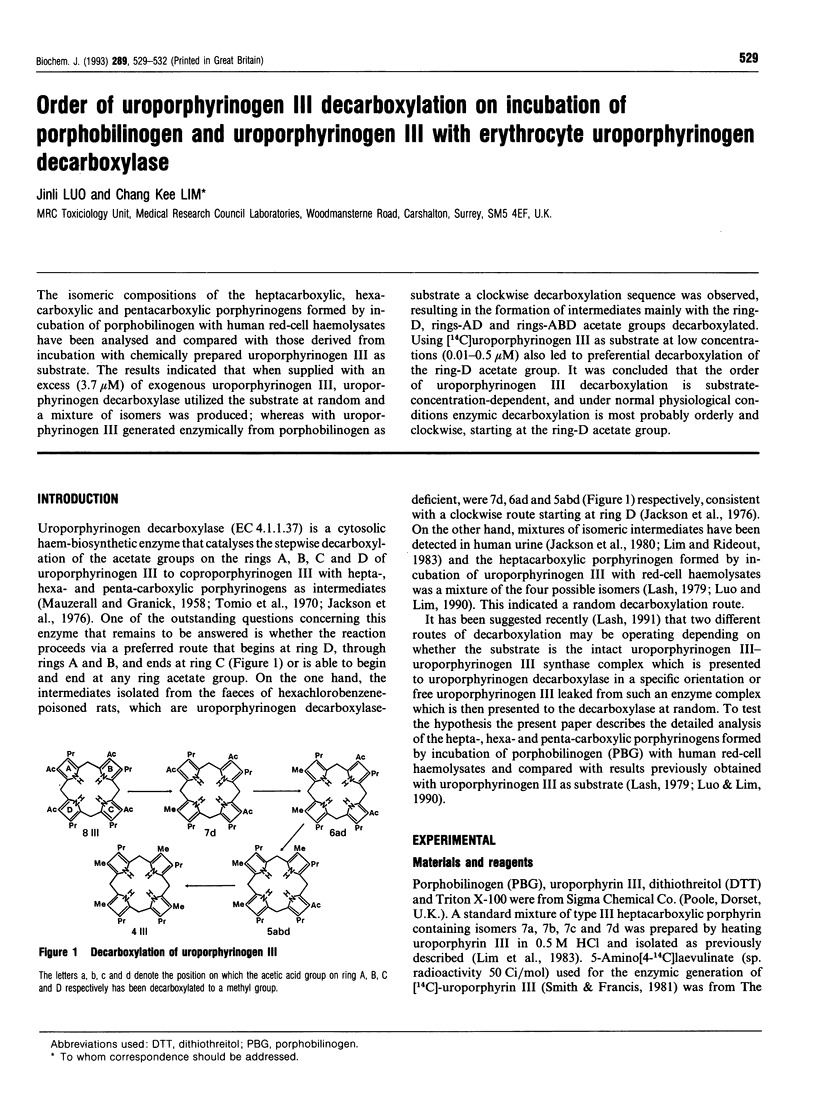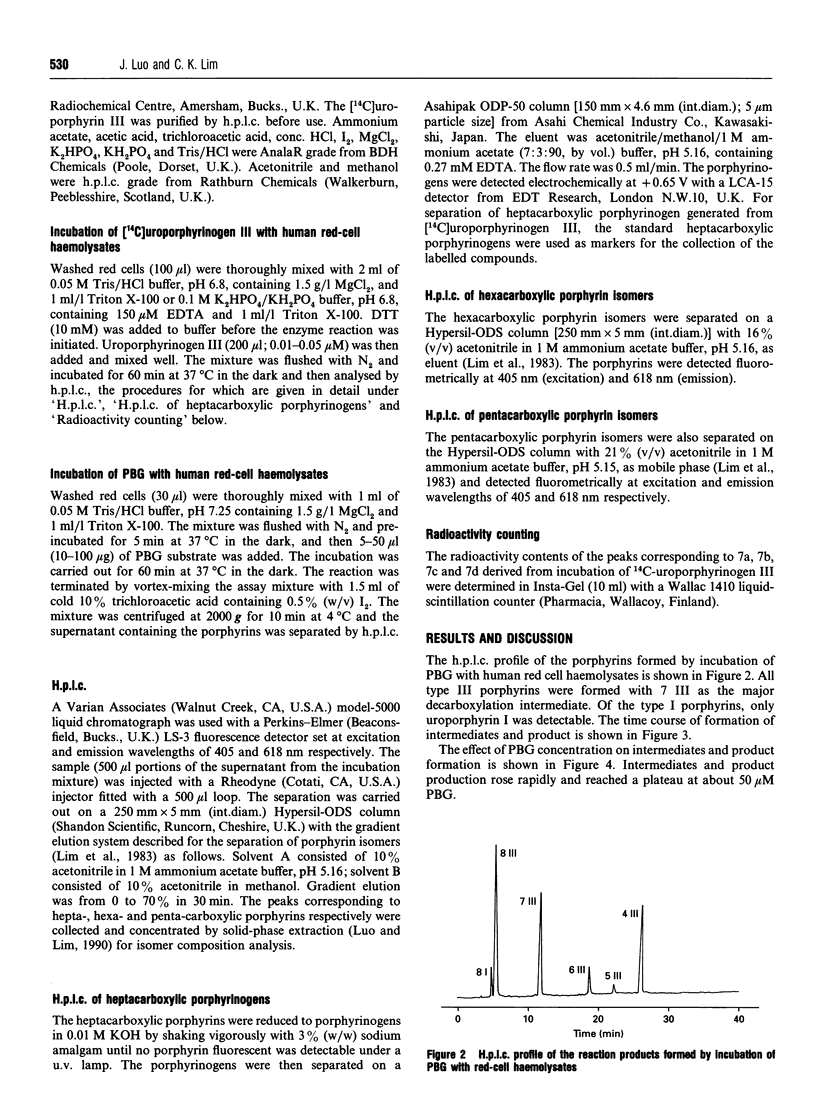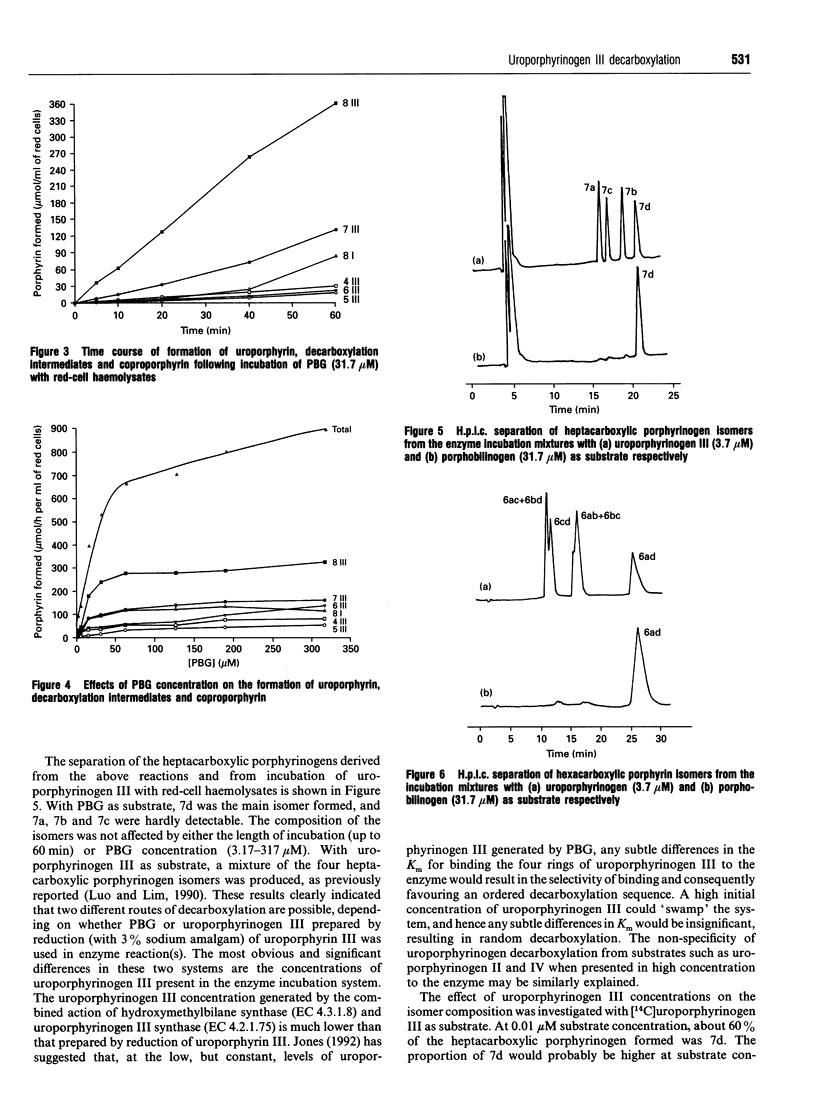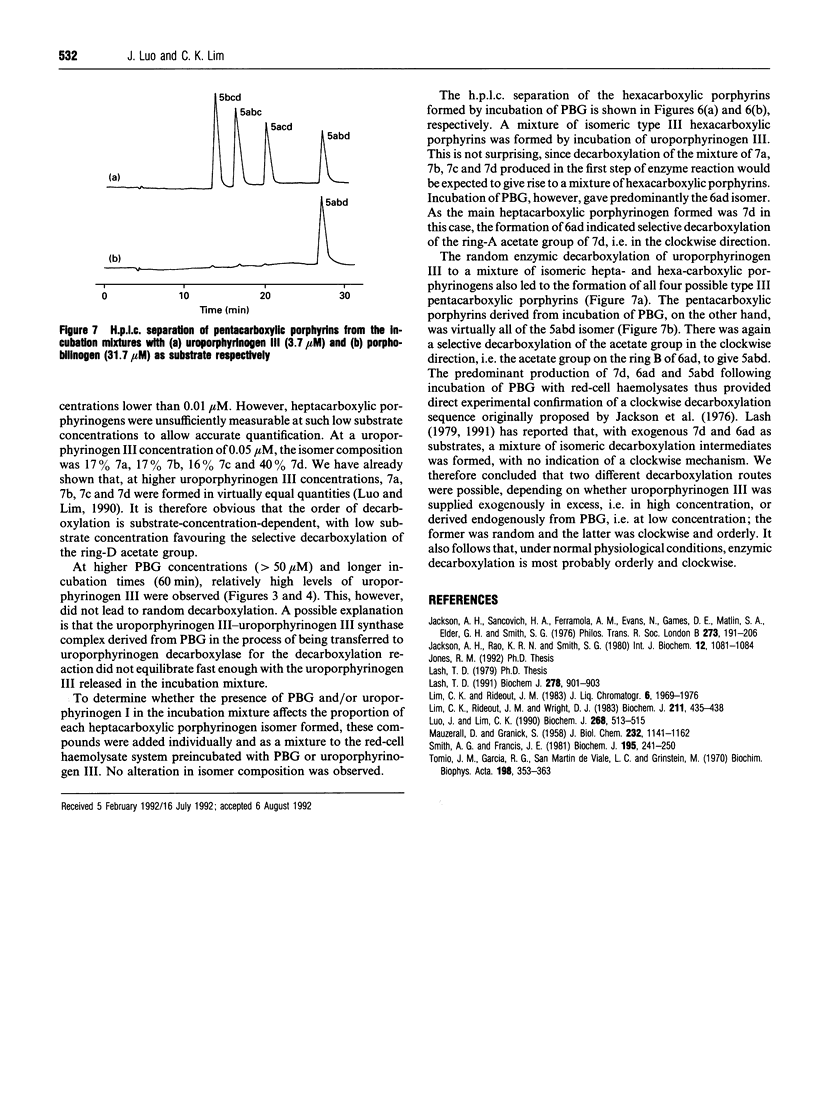Abstract
The isomeric compositions of the heptacarboxylic, hexacarboxylic and pentacarboxylic porphyrinogens formed by incubation of porphobilinogen with human red-cell haemolysates have been analysed and compared with those derived from incubation with chemically prepared uroporphyrinogen III as substrate. The results indicated that when supplied with an excess (3.7 microM) of exogenous uroporphyrinogen III, uroporphyrinogen decarboxylase utilized the substrate at random and a mixture of isomers was produced; whereas with uroporphyrinogen III generated enzymically from porphobilinogen as substrate a clockwise decarboxylation sequence was observed, resulting in the formation of intermediates mainly with the ring-D, rings-AD and rings-ABD acetate groups decarboxylated. Using [14C]uroporphyrinogen III as substrate at low concentrations (0.01-0.5 microM) also led to preferential decarboxylation of the ring-D acetate group. It was concluded that the order of uroporphyrinogen III decarboxylation is substrate-concentration-dependent, and under normal physiological conditions enzymic decarboxylation is most probably orderly and clockwise, starting at the ring-D acetate group.
Full text
PDF



Selected References
These references are in PubMed. This may not be the complete list of references from this article.
- Jackson A. H., Sancovich H. A., Ferramola A. M., Evans N., Games D. E., Matlin S. A., Elder G. H., Smith S. G. Macrocyclic intermediates in the biosynthesis of porphyrins. Philos Trans R Soc Lond B Biol Sci. 1976 Feb 5;273(924):191–206. doi: 10.1098/rstb.1976.0009. [DOI] [PubMed] [Google Scholar]
- Lash T. D. Action of uroporphyrinogen decarboxylase on uroporphyrinogen-III: a reassessment of the clockwise decarboxylation hypothesis. Biochem J. 1991 Sep 15;278(Pt 3):901–903. doi: 10.1042/bj2780901. [DOI] [PMC free article] [PubMed] [Google Scholar]
- Lim C. K., Rideout J. M., Wright D. J. Separation of porphyrin isomers by high-performance liquid chromatography. Biochem J. 1983 May 1;211(2):435–438. doi: 10.1042/bj2110435. [DOI] [PMC free article] [PubMed] [Google Scholar]
- Luo J., Lim C. K. Decarboxylation of uroporphyrinogen III by erythrocyte uroporphyrinogen decarboxylase. Evidence for a random decarboxylation mechanism. Biochem J. 1990 Jun 1;268(2):513–515. doi: 10.1042/bj2680513. [DOI] [PMC free article] [PubMed] [Google Scholar]
- MAUZERALL D., GRANICK S. Porphyrin biosynthesis in erythrocytes. III. Uroporphyrinogen and its decarboxylase. J Biol Chem. 1958 Jun;232(2):1141–1162. [PubMed] [Google Scholar]
- Smith A. G., Francis J. E. Investigations of rat liver uroporphyrinogen decarboxylase. Comparisons of porphyrinogens I and III as substrates and the inhibition by porphyrins. Biochem J. 1981 Apr 1;195(1):241–250. doi: 10.1042/bj1950241. [DOI] [PMC free article] [PubMed] [Google Scholar]
- Smith S. G., Rao K. R., Jackson A. H. The prophyrins of normal human urine, with a comparison of the excretion pattern in porphyria cutanea tarda. Int J Biochem. 1980;12(5-6):1081–1084. doi: 10.1016/0020-711x(80)90216-5. [DOI] [PubMed] [Google Scholar]
- Tomio J. M., García R. C., San Martín de Viale L. C., Grinstein M. Porphyrin biosynthesis. VII. Porphyrinogen carboxy-lyase from avian erythrocytes. Purification and properties. Biochim Biophys Acta. 1970 Feb 11;198(2):353–363. doi: 10.1016/0005-2744(70)90068-9. [DOI] [PubMed] [Google Scholar]


